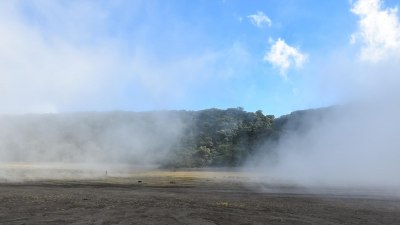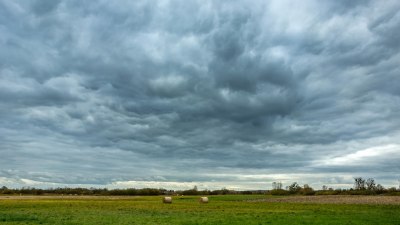Oops, Weatherman Lied Again! Why Forecasts Can Be So Wrong
Weather forecasts aren’t always accurate, and we often blame meteorologists. But why do predictions sometimes fail? Learn the challenges behind forecasting the weather.

This image was created with the assistance of DALL·E
We've all experienced it—you check the weather forecast, see a sunny prediction, and leave your umbrella at home, only to get drenched in an unexpected downpour. Or, the forecast warns of a snowstorm, and you prepare for chaos, only for it to be nothing more than a flurry. So, why do meteorologists sometimes get it wrong? The answer lies in the complex and ever-changing nature of the atmosphere.
The Complexity of Weather Systems
Weather forecasting relies on understanding and predicting the movement of the atmosphere. However, the atmosphere is an incredibly chaotic system influenced by multiple factors, including:
- Temperature fluctuations: Heat from the sun affects air pressure and wind movement, leading to unpredictable changes.
- Air pressure shifts: High and low-pressure systems interact, sometimes shifting unexpectedly.
- Moisture levels: Humidity levels influence precipitation, but small changes can mean the difference between light rain and a full-blown storm.
Even small errors in measuring or modeling any of these factors can cause a ripple effect that changes the entire forecast.
How Weather Forecasting Works
Meteorologists use advanced tools and models to predict the weather. Some of the main forecasting methods include:
- Satellites: Provide real-time images of cloud cover and storm movement.
- Weather radar: Detects precipitation intensity and movement.
- Computer models: Simulate atmospheric conditions based on current data.
- Weather balloons: Collect temperature, humidity, and wind data from different altitudes.
Despite these high-tech tools, the atmosphere is so dynamic that even the best models can't always predict exactly what will happen.
Short-Term vs. Long-Term Forecasts
One of the biggest challenges in weather forecasting is accuracy over time. Forecasts tend to be more reliable in the short term but become less accurate the further out they predict.
- 1-3 day forecasts: Usually quite accurate, as meteorologists have up-to-date data and less room for unexpected changes.
- 5-7 day forecasts: Still fairly reliable but with an increased chance of small errors.
- 10+ day forecasts: Much less accurate, as weather models struggle to predict long-term atmospheric shifts.
Because of this, the further ahead a forecast is, the more likely it is to change.
The Butterfly Effect: Small Changes, Big Impacts
Weather prediction follows the principles of chaos theory, often referred to as the butterfly effect. This concept suggests that tiny atmospheric changes—like a gust of wind or a temperature shift—can have massive consequences days later. A small error in initial measurements can throw off an entire forecast.
Regional Weather Challenges
Certain regions are harder to predict than others due to their geographical and climatic conditions:
- Coastal areas: Rapid temperature changes and ocean currents make forecasts tricky.
- Mountainous regions: Elevation changes impact wind and precipitation patterns.
- Tornado-prone areas: Sudden storm developments can be difficult to anticipate with precision.
If you live in one of these areas, you might notice that forecasts are less reliable than in other regions.
Human Error and Changing Predictions
Although meteorologists rely heavily on computers, human interpretation plays a role in forecasting. Experts analyze data, compare different models, and make final predictions. However, due to the unpredictable nature of weather, forecasts may need to be updated frequently.
Many people assume that if a forecast changes, the weatherman "lied." But in reality, weather models continuously update with new data, refining predictions as time goes on.
Can We Ever Have 100% Accurate Forecasts?
With advancements in artificial intelligence, machine learning, and improved satellite technology, weather forecasting is becoming more accurate. However, achieving 100% accuracy may never be possible due to the chaotic nature of the atmosphere.
That said, meteorologists are improving prediction models every year, reducing errors and providing more reliable weather information than ever before.
While it might seem like meteorologists get it wrong all the time, they actually do a great job considering how complex weather prediction is. Forecasts are based on the best available data, but the atmosphere's unpredictable nature means errors can still happen. So, the next time a forecast doesn’t go as planned, just remember—it’s not a lie, it’s just science at work.











